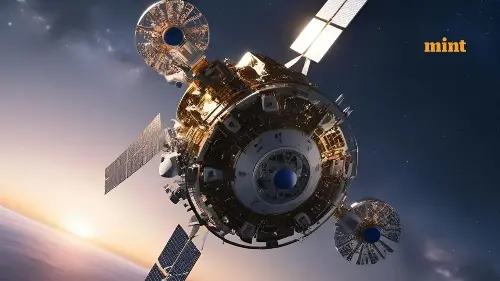
Cosmos 482, an old Soviet spacecraft, likely fell from the sky early Saturday morning, according to the European Space Agency. The space object, also known as Kosmos 482, was sent toward Venus more than 50 years ago to study its environment, but it failed and instead remained trapped in Earth orbit for decades.
Cosmos 482 is believed to be a capsule launched by the Soviet Union in March 1972 that failed en route to a transfer orbit that would have taken it to Venus to study its environment.
In the decades since its launch, the cylinder-shaped craft of about 3 feet (1 meter) in diameter, circled Earth aimlessly as it was slowly dragged back toward home.
According to the Russian space agency, Roscosmos, the probe entered the dense layers of the atmosphere around 12 PM India time (2:24 a.m. ET) on Saturday, May 11, splashing down in the Indian Ocean west of Jakarta, Indonesia.
The ESA, which was monitoring the falling space junk, also said on its website that radars in Germany did not spot the vehicle around 1 PM IST (3:32 a.m. ET), indicating “it is most likely that the reentry has already occurred.”
Did it burst into flames?
Space traffic experts were concerned about Cosmo 483's uncontrolled re-entry to the Earth since it was no longer capable of manoeuvring.
However, because of its strong heat shield, it likely did not burn up completely when it reentered Earth’s atmosphere. This makes it different from most space junk, which usually breaks apart and burns before hitting the ground.
“This object was designed to survive reentering Venus, so there’s fair odds that it’ll survive coming back (to Earth) in one piece,” Marlon Sorge, a space debris expert with The Aerospace Corporation, told CNN.
“That actually makes the risk less … because it would stay intact.”
What to do if you spot debris?
Marlon Sorge said that if Cosmos 482 had landed on dry ground, onlookers would have been advised to keep their distance. The aged spacecraft could leak dangerous fuels or pose other risks to people and property.
“Contact the authorities,” Sorge urged. “Please don’t mess with it.”
Legally, too, the object also belongs to Russia, according to the rules of 1967 Outer Space Treaty.
